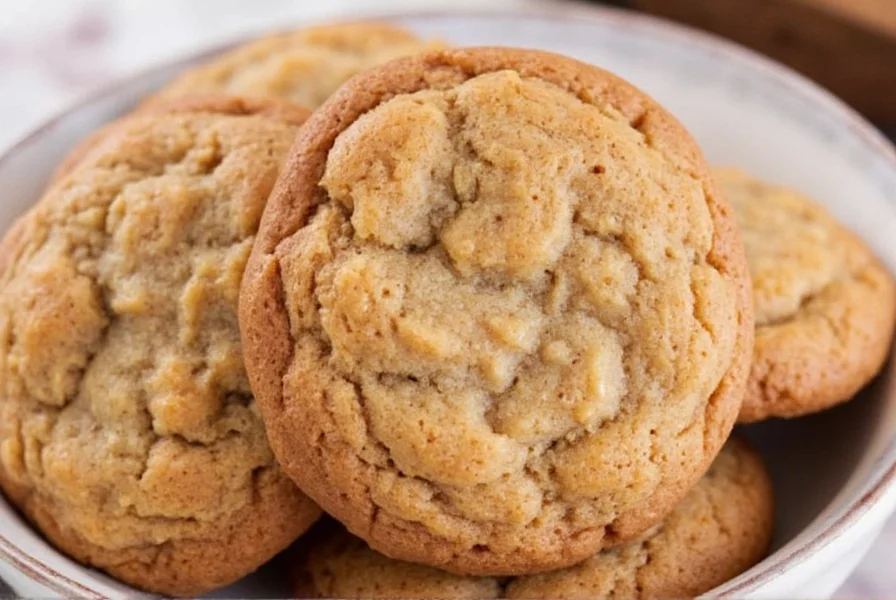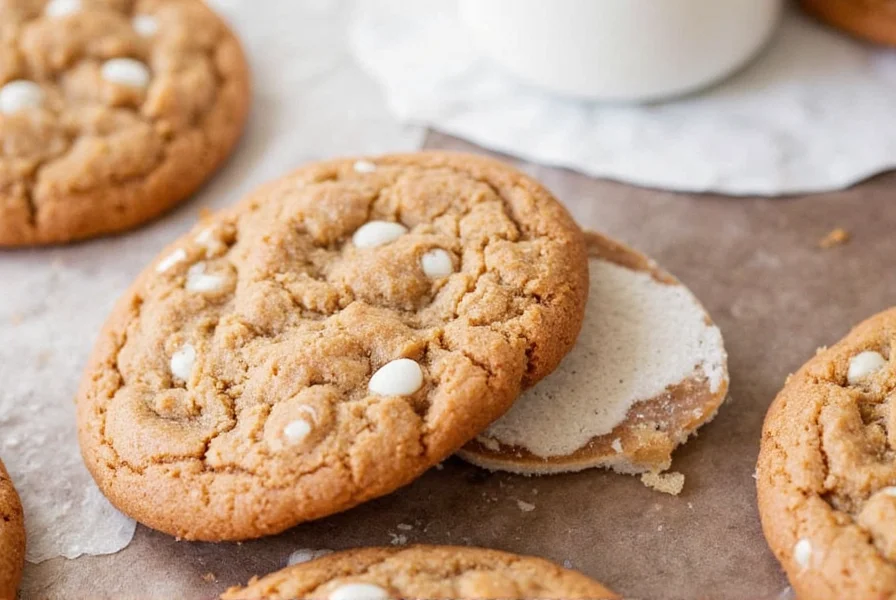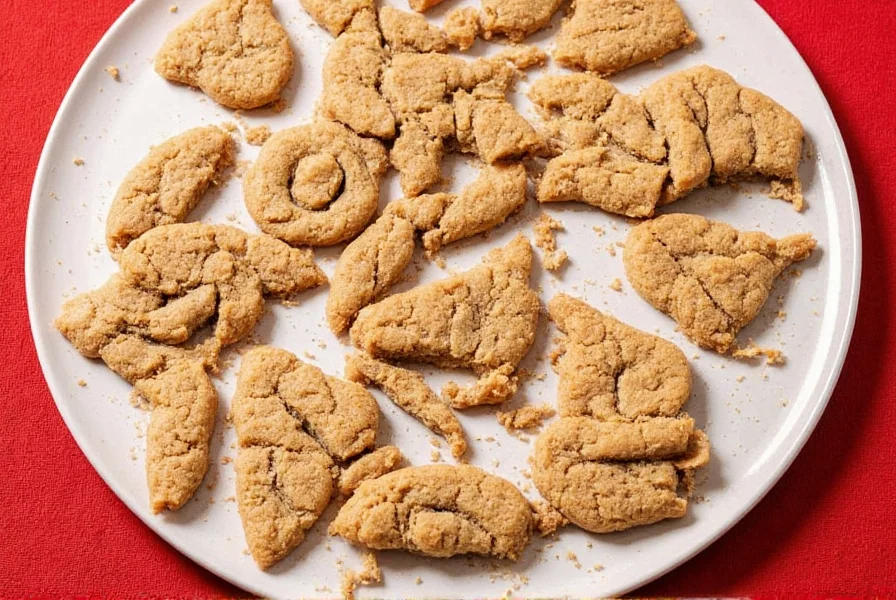The best ginger bread cookie recipe features 2 1/4 cups all-purpose flour, 1 tsp baking soda, 1/4 tsp salt, 1/2 cup unsalted butter, 1/2 cup brown sugar, 1/4 cup molasses, 1 large egg, and 2 1/2 tsp ginger spice mix. Chill dough for 2 hours, roll to 1/4-inch thickness, cut shapes, and bake at 350°F for 8-10 minutes for soft, flavorful cookies.
The Ultimate Guide to Perfect Ginger Bread Cookies
There's nothing quite like the warm, spicy aroma of freshly baked ginger bread cookies filling your kitchen. This traditional holiday treat has delighted generations with its distinctive blend of molasses, ginger, and warming spices. Our perfected recipe delivers cookies with the ideal balance of crisp edges and soft centers—never too hard or too cakey. Whether you're preparing for Christmas cookie exchanges or satisfying a year-round craving, this guide provides everything you need for flawless ginger bread cookies every time.
Why This Ginger Bread Cookie Recipe Works
Many traditional ginger bread cookie recipes produce cookies that are either too hard or lack depth of flavor. Our tested formula addresses these common issues through precise ingredient ratios and technique. The secret lies in the perfect balance of molasses to sugar, the specific blend of spices, and the crucial chilling step that prevents excessive spreading. Unlike many easy ginger bread cookie recipes that compromise on flavor, this version delivers authentic, complex spice notes without overwhelming heat.

Essential Ingredients Explained
Understanding each component's role helps you become a better baker. Don't substitute haphazardly—these ingredients work together for the perfect ginger bread cookie texture:
| Ingredient | Why It Matters | Substitution Notes |
|---|---|---|
| Dark molasses | Provides deep flavor and moisture; light molasses makes weaker cookies | Can substitute 3/4 cup honey + 1/4 cup brown sugar, but flavor changes |
| Freshly grated ginger | Adds bright, zesty notes that powdered ginger can't match | Use 1/2 tsp powdered ginger per 1 tbsp fresh if necessary |
| Cold unsalted butter | Creates flakiness and controls spread; salted butter alters flavor balance | Margarine produces greasy texture; avoid |
| All-purpose flour | Provides structure without toughness | Don't substitute cake or bread flour; measure properly |
Equipment You'll Need
While you don't need specialized tools for this traditional ginger bread cookie recipe, having the right equipment ensures success:
- Stand mixer or hand mixer (a wooden spoon works but requires more effort)
- Cookie cutters (invest in quality metal cutters for clean edges)
- Parchment paper or silicone baking mats (prevents sticking without greasing)
- Two heavy-duty baking sheets (thin sheets warp and cause uneven baking)
- Wire cooling racks (essential for preventing soggy bottoms)
Step-by-Step Baking Instructions
Preparing the Dough
- Whisk together 2 1/4 cups flour, 1 tsp baking soda, 1/4 tsp salt, 1 1/2 tsp ground ginger, 1/2 tsp cinnamon, 1/4 tsp cloves, and 1/8 tsp black pepper
- Cream 1/2 cup softened butter and 1/2 cup packed brown sugar until light
- Mix in 1/4 cup molasses and 1 large egg until fully incorporated
- Gradually add dry ingredients, mixing just until combined
- Divide dough into two discs, wrap in plastic, and refrigerate for at least 2 hours (overnight preferred)
Baking Perfect Cookies
- Preheat oven to 350°F with racks in upper and lower thirds
- Roll chilled dough between parchment to 1/4-inch thickness
- Cut shapes, transferring to parchment-lined baking sheets with 1-inch spacing
- Bake 8-10 minutes until edges are set but centers still look slightly soft
- Cool on baking sheets for 5 minutes before transferring to wire racks

Pro Baking Tips for Success
Professional bakers know these ginger bread cookie baking tips make all the difference:
- Chill thoroughly: Never skip the chilling step—warm dough spreads too much
- Measure flour correctly: Spoon flour into measuring cup then level; don't scoop directly
- Watch baking time closely: Cookies continue cooking on hot sheets after removal
- Use fresh spices: Old spices lose potency; replace if older than 6 months
- Rotate sheets: Halfway through baking for even browning
Common Mistakes to Avoid
Even experienced bakers make these errors with ginger bread cookie recipes from scratch:
- Overmixing dough: Creates tough cookies; mix until just combined
- Rolling dough too thin: Results in crispy cookies rather than soft centers
- Baking on hot sheets: Always cool sheets between batches or cookies spread
- Using light molasses: Lacks depth; dark or robust molasses is essential
- Overbaking: Cookies should look slightly underdone when removed
Storage and Serving Suggestions
Proper storage maintains that fresh-baked quality. Store cooled cookies in an airtight container with a slice of bread to maintain softness for up to 1 week. For longer storage, freeze baked cookies between parchment layers for up to 3 months. Thaw at room temperature.
These soft ginger bread cookies pair beautifully with hot tea, coffee, or a glass of cold milk. For holiday presentations, sandwich cookies with lemon glaze or dip half in melted chocolate. Children love decorating them with royal icing—just wait until completely cooled.
Popular Recipe Variations
Once you've mastered the best ginger bread cookie recipe, try these delicious adaptations:
- Lemon-Infused: Add 1 tbsp finely grated lemon zest to dough
- Spiced Chai Version: Replace 1/2 tsp ginger with 1 tsp chai spice blend
- Gluten-Free: Substitute with 1:1 gluten-free flour blend (add 1/2 tsp xanthan gum)
- Sticky Toffee: Dip cooled cookies in date caramel sauce
- Chocolate-Dipped: Melt 8 oz dark chocolate, dip half cookies, and sprinkle with sea salt
Frequently Asked Questions
Why are my ginger bread cookies spreading too much?
Excessive spreading usually happens when dough isn't chilled sufficiently, butter is too soft, or too much sugar is used. Always chill dough for at least 2 hours, use cold butter, and measure ingredients precisely. Baking sheets should be cool between batches—never place dough on hot sheets.
Can I make ginger bread cookies without molasses?
Molasses is essential for authentic ginger bread flavor and texture. While you can substitute with 3/4 cup honey plus 1/4 cup brown sugar, the cookies will lack the distinctive deep flavor and may spread more. For best results, use dark molasses—light molasses creates weaker flavor.
How do I keep ginger bread cookies soft?
For soft ginger bread cookies, don't overbake—remove when centers still look slightly underdone. Store with a slice of bread in an airtight container to maintain moisture. Using more brown sugar than white sugar also helps retain softness. Properly chilled dough prevents excessive spreading which leads to crispier cookies.
Can I freeze ginger bread cookie dough?
Yes, ginger bread cookie dough freezes exceptionally well. Shape into discs, wrap tightly in plastic, and freeze for up to 3 months. Thaw overnight in refrigerator before rolling. You can also cut shapes, arrange on baking sheets, freeze solid, then transfer to freezer bags. Bake frozen—add 1-2 minutes to baking time.
What's the difference between ginger bread cookies and ginger snaps?
Ginger bread cookies are typically softer with cake-like texture, while ginger snaps are crisp throughout. The difference comes from sugar ratios (more white sugar creates crispness) and baking time (longer baking creates snaps). Our recipe produces cookies with crisp edges and soft centers—the perfect middle ground many bakers prefer.











 浙公网安备
33010002000092号
浙公网安备
33010002000092号 浙B2-20120091-4
浙B2-20120091-4